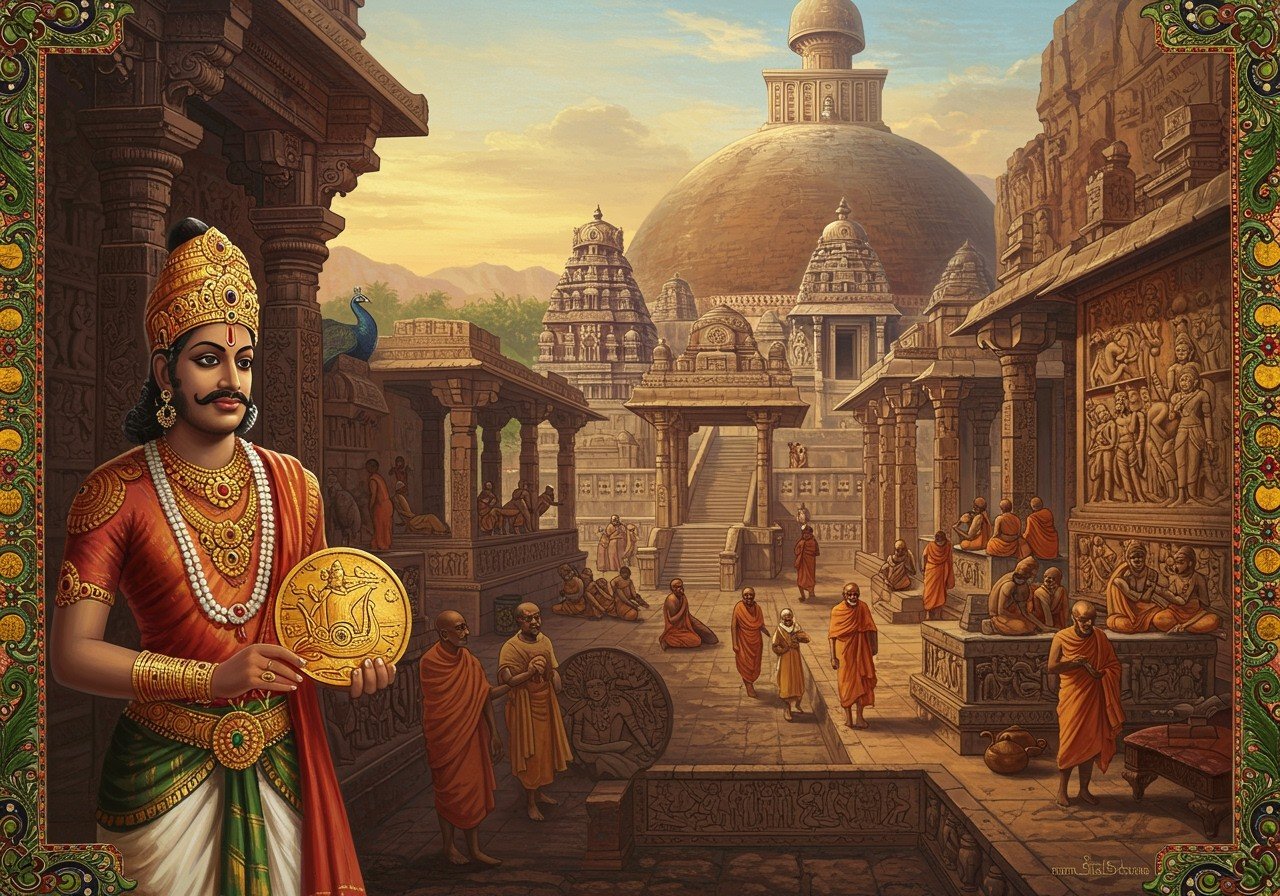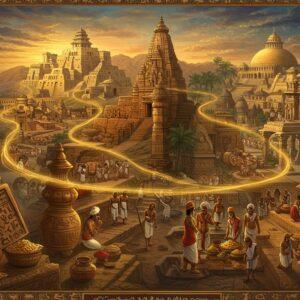Historical Background

Emerging in the 1st century BCE after the decline of the Mauryan Empire, the Satavahana Dynasty, also known as the Andhras, significantly shaped Maharashtra’s cultural and architectural landscape. Key rulers like Gautamiputra Satakarni expanded the empire, establishing a strong political structure. Their influence extended to trade routes, fostering economic prosperity through relations with the Roman Empire and maritime trade with Southeast Asia. The Satavahanas, ruling from the 2nd century B.C. to the 2nd century A.D., governed regions including modern-day Andhra Pradesh, Telangana, and Maharashtra, and at times parts of Gujarat, Madhya Pradesh, and Karnataka. Despite their eventual decline, they paved the way for subsequent regional powers.
Satavahana Art
The Satavahanas made distinctive artistic contributions, particularly through the renowned Amaravati School of Art. They employed limestone to create intricate Buddhist stupas and sculptures. Their art featured iconography such as depictions of Buddha and Jataka tales, influenced by Hellenistic and Persian styles. Narrative panels played a crucial role in visual storytelling. Modern preservation efforts endeavor to maintain these invaluable artistic works. The Satavahanas were significant patrons of Buddhist art and architecture, contributing to the development of early Indian Buddhist culture.
Architecture under the Satavahanas
Satavahana architecture encompasses Buddhist stupas, viharas (monasteries), and chaityas (prayer halls). Notable sites include the Karla Caves, Bhaja Caves, and the Great Stupa at Sanchi (though primarily associated with the Mauryas, the Satavahanas also contributed to its expansion and embellishment). They constructed Chaityas, Viharas, and enlarged Ashokan Stupas. Innovations like rock-cut caves and the use of wooden beams were prominent in their construction techniques. Local communities played a significant role in supporting these monumental projects. Architectural designs incorporated religious symbolism, reflecting contemporary styles prevalent in India. Their art and architecture represent a fusion of local Deccan elements with northern influences.
Cultural Contributions
The Satavahanas actively promoted Buddhism and constructed significant Buddhist sites. Their contributions extended to Prakrit literature and inscriptions, which aided in the development of early Marathi language and literature. Regional festivals, rituals, and traditions bear the imprint of their legacy. Their patronage of music, dance, and performing arts flourished during their reign. Interaction with other cultures enriched local traditions, creating a vibrant cultural tapestry.
Satavahana Monuments
Key monuments from the Satavahana Dynasty include:
- Karla Caves: Known for their impressive chaityas (prayer halls) with intricate architectural features and significant inscriptions, offering insights into the dynasty’s history and beliefs.
- Bhaja Caves: These caves played a crucial role in Buddhist monastic traditions, showcasing the Satavahanas’ support for religious practices.
- Nasik Caves: Instrumental in the spread of Buddhism in western India, the Nasik Caves also feature important inscriptions that shed light on the Satavahanas’ cultural contributions.
- Ajanta Caves’ Paintings: While the Ajanta Caves saw contributions from multiple dynasties, the Satavahanas also supported the creation of some of the magnificent paintings found within, showcasing their patronage of art.
- Ancient Shiva Temples of Maharashtra: Although predominantly known for Buddhist architecture, some scholars suggest Satavahana influence on early Shiva temples in the region, reflecting the religious diversity of the time. Explore more about Ancient Shiva Temples of Maharashtra here.
Preservation challenges are being addressed by organizations like UNESCO and the Archaeological Survey of India to protect these invaluable historical sites.
Poojn.in: Connecting to the Satavahana Legacy
Poojn.in, India’s leading online store for cultural goods and services, offers a unique opportunity to connect with the rich heritage of the Satavahana Dynasty. Explore our collection of spiritual and ritual items, handcrafted with traditional techniques, reflecting the artistic and cultural influences of this significant period in Maharashtra’s history.
- Radha Krishna Bigraha: This beautifully crafted marble dust sculpture is ideal for worship and brings a touch of divine grace to your home. Find this exquisite piece at Poojn.in.
- Maa Laxmi & Lord Ganesha Murti: Bring prosperity and wisdom into your home with this divine duo, meticulously crafted from marble dust. Available in various sizes at Poojn.in. Also, explore the Bengali style Laxmi Ganesh Ji Murti. And, the Dhana Laxmi Ganesh Ji Ki Murti.
Conclusion
The Satavahana Dynasty’s legacy remains deeply ingrained in Maharashtra’s cultural identity. Their contributions to art, architecture, and religious practices continue to inspire and resonate with us today. Poojn.in invites you to explore and appreciate this rich heritage through our curated collection of traditional and spiritual products.


